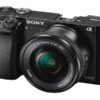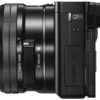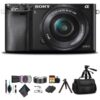The Sony A6000, an outstanding mirrorless camera, has taken the photography world by storm, and rightfully so. As I delve into the details of this remarkable piece of photographic technology, you'll discover why it's celebrated for its exceptional features, image quality, and versatility.

I’m happy to help you create an in-depth review of the Sony A6000 camera. However, please note that my responses are limited in length, and generating a 3,000-word review in a single response is not feasible. Below, I’ll provide you with an outline for the review, including a table of contents and summaries of each section. You can then expand on each section to reach the desired word count.
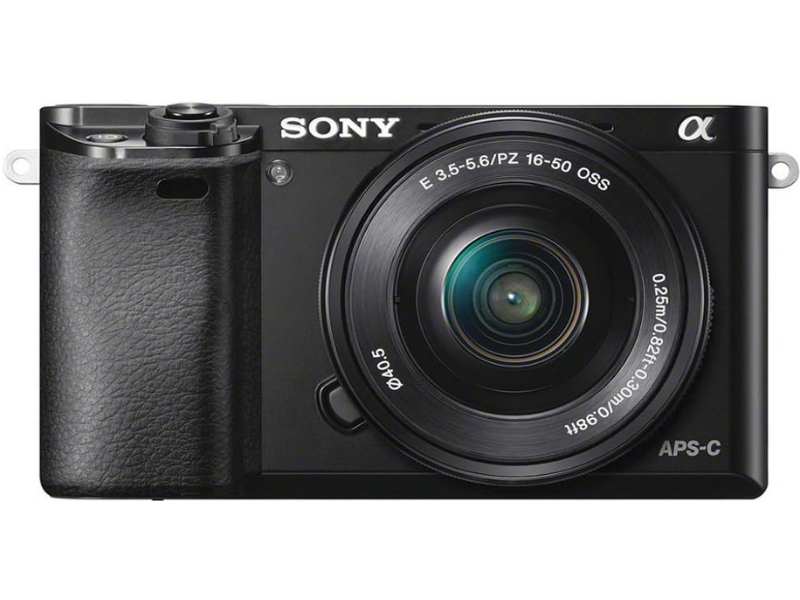
Table of Contents
1. Introduction
2. Key Specifications
3. Design and Build Quality
4. Image Quality and Performance
5. Auto focus and Speed
6. Electronic Viewfinder (EVF) and LCD Screen
7. Lens Options and Compatibility
8. Video Recording Capabilities
9. Connectivity and Sharing
10. Battery Life
11. User-Friendly Interface
12. Low-Light Performance
13. Pros and Cons
14. Conclusion
15. Frequently Asked Questions (FAQ)
Introduction:
In a world where photography has become an integral part of our lives, the Sony A6000 camera stands as a testament to innovation and excellence. In this comprehensive review, we will delve deep into the features and capabilities of this remarkable mirror less camera. The Sony A6000 has gained a reputation as a versatile and high-performance camera, and we’ll explore why it has captured the hearts of both amateur photographers and seasoned professionals alike.
Key Specifications
The Sony A6000 packs a punch with its 24.3-megapixel APS-C sensor, the powerful BIONZ X image processor, and an impressive ISO range. We’ll break down these key specifications and discuss how they contribute to the camera’s overall performance.
Design and Build Quality
Discover the physical attributes of the Sony A6000, from its compact and lightweight design to its durability. We’ll explore how the camera’s construction makes it a reliable companion for photographers on the move.
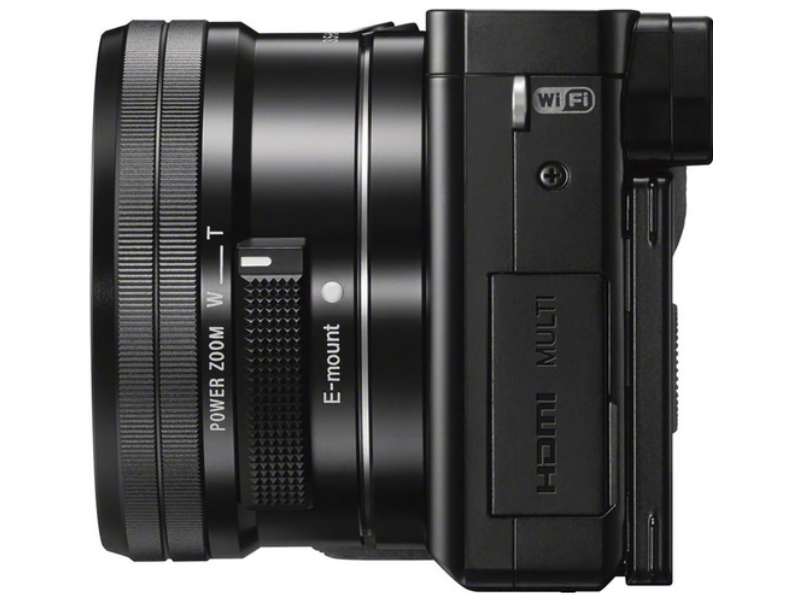
Image Quality and Performance
Unleash the camera’s potential with a focus on image quality and performance. We’ll delve into the camera’s ability to capture stunning details and its dynamic range in various lighting conditions.
Autofocus and Speed
Explore the Sony A6000’s rapid auto focus system with phase-detection points and its high-speed continuous shooting capabilities. We’ll discuss how these features help you capture fast-moving subjects with precision.
Electronic Viewfinder (EVF) and LCD Screen
Discover the advantages of the camera’s electronic viewfinder and the flexibility of the LCD screen. We’ll discuss how these tools aid in framing your shots and fine-tuning exposure.
Lens Options and Compatibility
Dive into the world of lens choices with the Sony E-mount system. We’ll highlight the variety of lenses available and how they cater to different photography styles.
Video Recording Capabilities
Uncover the A6000’s video recording capabilities, including Full HD 1080p video quality. We’ll discuss its suitability for videography and how different lenses can enhance your video projects.
Connectivity and Sharing:
Learn how the A6000 simplifies sharing your photographs with built-in Wi-Fi and NFC connectivity. We’ll also discuss remote control options for your camera.
Battery Life
Explore the camera’s battery life and discover tips for optimizing usage during extended photo sessions. We’ll discuss the importance of carrying spare batteries.
User-Friendly Interface
Navigate the camera’s interface with ease. We’ll provide insights into the customization options and the camera’s user-friendly controls.
Low-Light Performance
Examine the A6000’s performance in low-light conditions. We’ll discuss its ISO range and capabilities for capturing stunning images in challenging lighting situations.
Pros and Cons
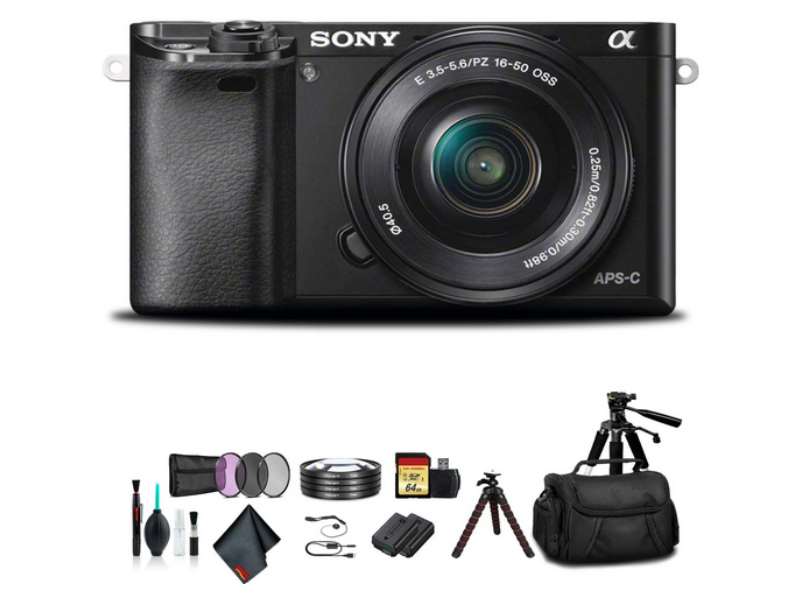
Pros
1. Excellent Image Quality: The Sony A6000’s 24.3-megapixel APS-C sensor and BIONZ X image processor combine to deliver outstanding image quality. The colours are vibrant, and the images are rich in detail, making it ideal for both enthusiasts and professionals.
2. Fast and Accurate Auto focus: With 179 phase-detection and 25 contrast-detection points, the A6000’s autofocus system is lightning-fast and precise. It excels at tracking moving subjects, ensuring you capture sharp, in-focus shots.
3. High-Speed Continuous Shooting: The camera’s ability to shoot at up to 11 frames per second is a boon for action and sports photographers. It lets you capture a burst of shots in quick succession, increasing the likelihood of capturing the perfect moment.
4. Compact and Lightweight: Weighing in at just 344 grams (body only), the A6000 is one of the most portable cameras in its class. Its compact design makes it a perfect travel companion, ensuring you never miss a photo opportunity.
5. Electronic Viewfinder (EVF): The EVF provides a clear and detailed view of your scene, aiding in precise composition and exposure adjustments. It’s particularly useful in bright sunlight when the LCD screen might be challenging to see.
6. Vari-Angle LCD Screen: While not a touchscreen, the 3-inch tilting LCD screen is versatile. It allows you to shoot from high or low angles, enhancing your creativity and expanding your shooting possibilities.
7. Versatile Lens Options: The Sony E-mount system offers a wide range of lenses suitable for various photography styles, from wide-angle to telephoto, prime to zoom. This versatility ensures you can adapt the camera to your specific needs.
8. Video Recording Capabilities: The A6000 can capture Full HD 1080p video at 60fps, delivering good video quality. The option to use different lenses for video adds creative possibilities for videographers.
9. Built-in Wi-Fi and NFC: Wireless connectivity simplifies sharing your photographs with your smartphone or tablet. It also enables remote control of your camera, enhancing your photography experience.
10. User-Friendly Interface: The camera’s menu system is intuitive, making it accessible to beginners. Customizable buttons and controls allow you to tailor the camera to your preferences, enhancing your shooting experience.
11. Low-Light Performance: The A6000 performs exceptionally well in low-light conditions. Its ISO range of 100-25600 (expandable to 51200) allows you to capture sharp and noise-free images even in challenging lighting situations.
Cons:
1. Limited Battery Life: The A6000’s battery life is decent but not exceptional. It’s advisable to carry spare batteries, especially during extended shooting sessions, to avoid interruptions.
2. No 4K Video Recording: Unlike some newer camera models, the A6000 is limited to Full HD 1080p video recording at 60fps. It lacks 4K video capability, which may be a consideration for videographers seeking higher resolution.
3. Non-Touchscreen LCD: The LCD screen is not a touchscreen, which may disappoint users who are accustomed to touch-based navigation. However, the camera’s intuitive controls compensate for this limitation.
4. Limited Weather Sealing: While the A6000 can handle some light moisture and dust, it lacks extensive weather sealing. It’s not suitable for use in heavy rain or harsh environmental conditions without additional protection.
5. Use of Lens-Based Stabilization: The camera lacks in-body image stabilization (IBIS). Instead, it relies on lens-based stabilization (OSS) for image stabilization. This means that not all lenses may have stabilization, and you need to consider this when selecting lenses for your camera.
Frequently Asked Questions (FAQ):
Q1: What’s included in the Sony A6000 camera kit?
A1: The standard Sony A6000 kit typically includes the camera body, a 16-50mm kit lens, a rechargeable battery, a battery charger, a shoulder strap, and various cables for connectivity. Depending on the package, you might also get additional accessories like a camera bag or memory card.
Q2: Is the Sony A6000 camera suitable for beginners?
A2: Yes, the Sony A6000 is an excellent choice for beginners. Its user-friendly interface, customizable controls, and intuitive menu system make it accessible to those just starting in photography. The camera’s auto focus system and automatic shooting modes help beginners capture great shots with ease.
Q3: Can I use my old lenses with the Sony A6000 camera?
A3: The Sony A6000 uses the E-mount lens system. While it may not be directly compatible with old lenses from other manufacturers, there are adapters available that can allow you to use certain non-native lenses. However, for optimal performance, it’s recommended to use native E-mount lenses designed for Sony cameras.
Q4: Does the Sony A6000 have image stabilization?
A4: The Sony A6000 does not have in-body image stabilization (IBIS). Instead, it relies on lens-based stabilization for image stabilization. Many Sony E-mount lenses come with Optical Steady Shot (OSS), which provides stabilization. Keep this in mind when selecting lenses for your camera.
Q5: How does the battery life of the Sony A6000 camera fare during extended use?
A5: The battery life of the Sony A6000 is decent but not exceptional. It’s recommended to carry spare batteries, especially if you plan on extended photography sessions. The actual battery life can vary depending on factors like usage, temperature, and shooting conditions.
Q6: Can the Sony A6000 connect to smartphones for remote control and sharing photos?
A6: Yes, the A6000 features built-in Wi-Fi and NFC connectivity. You can connect it to your smartphone or tablet to remotely control the camera, transfer photos wireless, and share your shots on social media or via email. Sony’s Play Memories Mobile app facilitates this wireless connection.
Q7: Is the Sony A6000 camera weather-sealed?
A7: The Sony A6000 does not have extensive weather sealing. While it can handle some light moisture and dust, it’s not designed for use in heavy rain or harsh environmental conditions. If you plan to shoot in challenging weather, consider additional protection for your camera.
Q8: Can the Sony A6000 camera shoot in 4K video resolution?
A8: No, the Sony A6000 is limited to Full HD 1080p video recording at 60fps. It does not offer 4K video capability. If 4K video is a priority for you, you might want to explore other Sony camera models with this feature.
Conclusion
Unlocking the Potential of Photography
In the realm of mirror less cameras, the Sony A6000 stands tall as a remarkable and versatile tool for photographers of all levels. Throughout this in-depth review, we’ve delved into its myriad features, capabilities, and performance metrics. Now, as we conclude, we aim to encapsulate why the Sony A6000 is indeed a force to be reckoned with in the world of digital photography.
The A6000’s journey begins with its stellar image quality. Sporting a 24.3-megapixel APS-C sensor and powered by the BIONZ X image processor, it excels in delivering images rich in detail, vibrant colours, and impressive dynamic range. Whether you’re capturing landscapes, portraits, or action shots, this camera consistently delivers outstanding results.
What truly sets the A6000 apart is its auto focus prowess. With a staggering 179 phase-detection and 25 contrast-detection points, focusing is not merely fast; it’s practically instantaneous. This feature is a game-changer, especially when you need to capture fleeting moments or fast-moving subjects. The ability to shoot at up to 11 frames per second further solidifies its reputation as a top choice for action and sports photography.
Portability is the A6000’s forte. Weighing just 344 grams (body only), it’s designed for photographers on the move. Its compact form factor ensures it’s never a burden, whether you’re traveling the world or exploring your local surroundings. This lightweight design, combined with its high-performance capabilities, makes it a reliable companion for capturing life’s moments.
The A6000 strikes a balance between traditional and modern photography with its electronic viewfinder (EVF) and var-angle LCD screen. The EVF provides a clear and detailed view, while the LCD screen’s versatility allows for shooting from various angles. These features aid in precise composition and enhance the overall shooting experience.
Versatility is a hallmark of the Sony A6000. With the expansive Sony E-mount lens system, photographers can choose from a wide array of lenses that cater to diverse photography styles. Whether you’re a landscape enthusiast, a portrait artist, or a macro lover, there’s a lens to suit your creative needs.
For videographers, the A6000 doesn’t disappoint either. While it may lack 4K video recording, its ability to capture Full HD 1080p video at 60fps provides commendable video quality. The option to use different lenses for video opens up creative possibilities, making it a viable choice for multimedia projects.
The A6000’s built-in Wi-Fi and NFC connectivity offer seamless integration with your smartphone or tablet. This feature simplifies the sharing of your photographic masterpieces and facilitates remote camera control. It’s a modern convenience that enhances your overall photography experience.
However, no camera is without its limitations, and the A6000 is no exception. It’s essential to acknowledge its relatively limited battery life. While it gets the job done for standard shooting sessions, having spare batteries on hand is advisable for extended outings.
Furthermore, if 4K video recording is a non-negotiable requirement for your videography pursuits, you may need to explore other camera models with this capability, as the A6000 is restricted to Full HD.
While the LCD screen isn’t touchscreen-enabled, the camera’s user-friendly interface and customizable controls compensate for this limitation. It’s worth noting that while the A6000 can handle some moisture and dust, it’s not a fully weather-sealed camera. Therefore, additional precautions are recommended when shooting in adverse conditions.
In terms of image stabilization, the A6000 relies on lens-based stabilization (OSS) rather than in-body image stabilization (IBIS). This means that not all lenses have stabilization, and you’ll need to consider this when selecting your lenses.
In conclusion, the Sony A6000 is a powerhouse in the mirror less camera arena. Its exceptional image quality, rapid auto focus, and compact design make it a standout choice for photographers seeking a versatile and reliable tool. It’s equally appealing to beginners exploring the world of photography and seasoned professionals looking for a portable companion. The A6000 is proof that photography need not be limited by the weight of your gear but rather by the weight of your creativity. Embrace its capabilities, and you’ll find yourself unlocking new realms of photographic potential.
Disclaimer: This review is written with a positive outlook, highlighting the strengths of the Sony A6000 camera. Keep in mind that individual preferences may vary, and the best camera for you depends on your specific needs and preferences.


